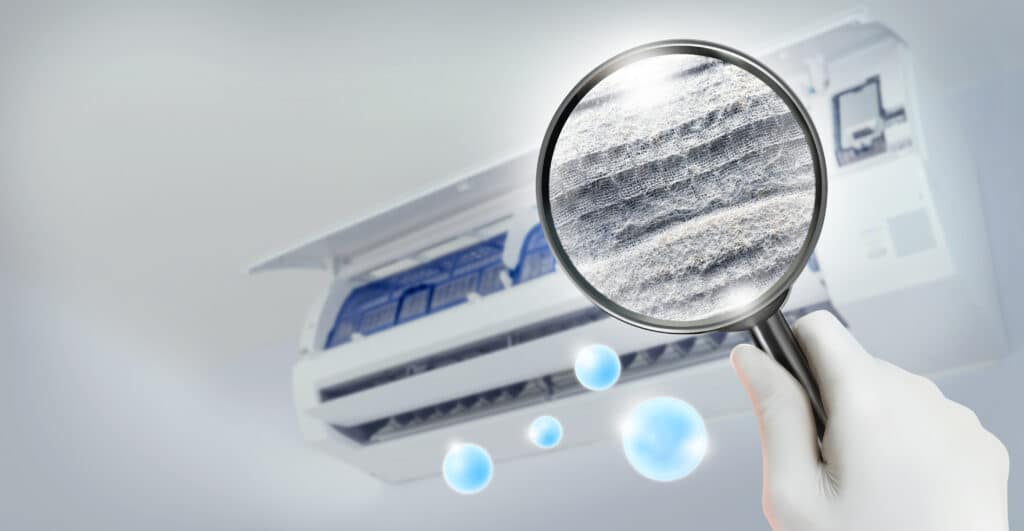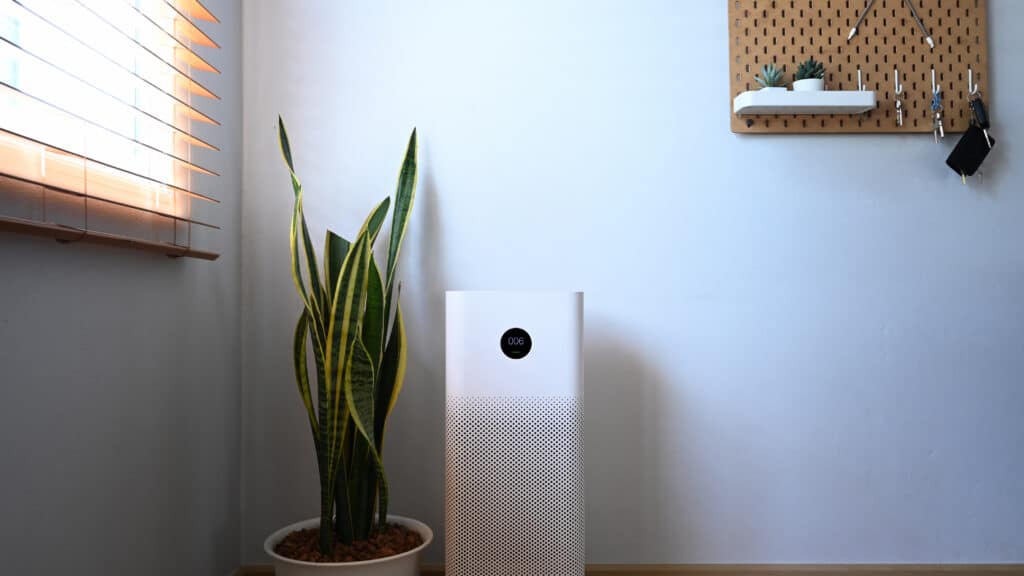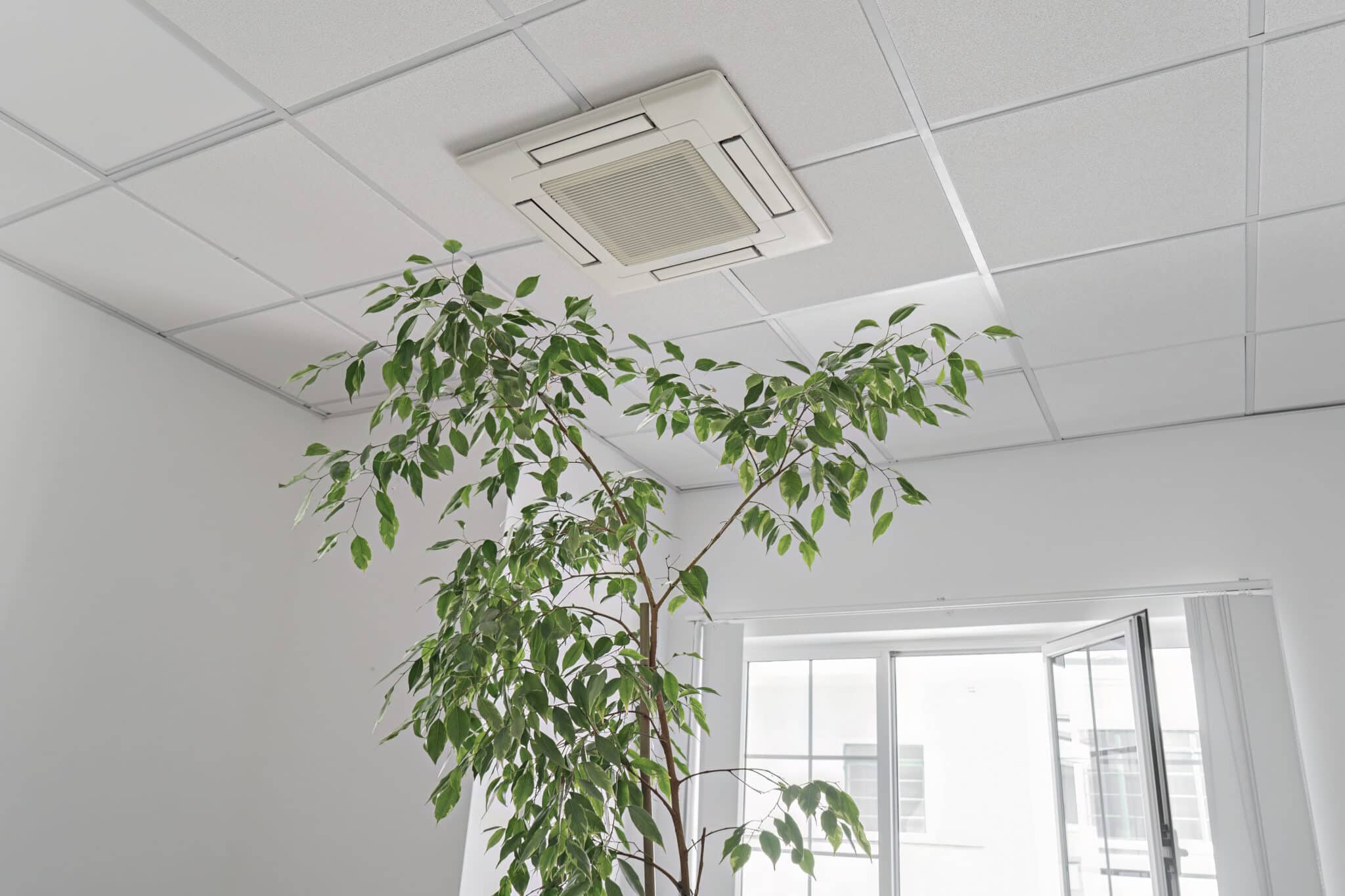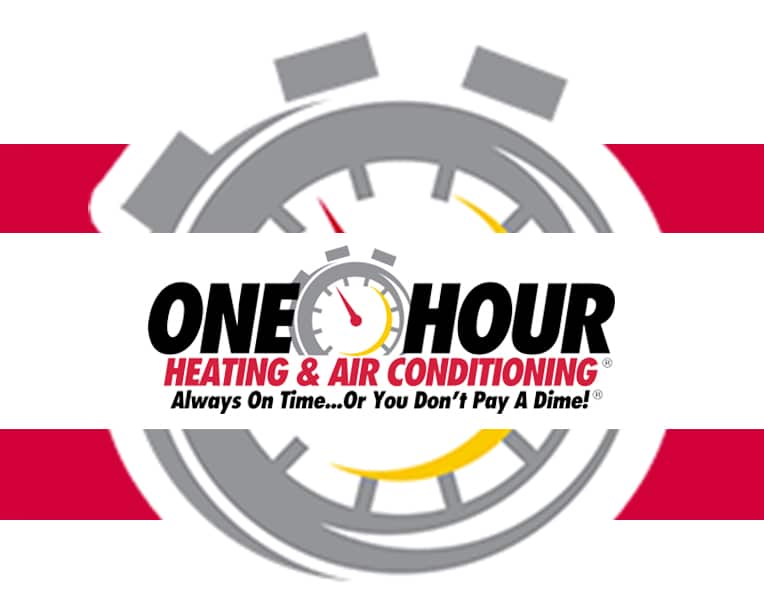Indoor Air Quality – Have you ever walked into your home and felt like something was off with the air? Maybe it smelled a bit stale, or you noticed some dust floating around. These might be signs that the air in your home needs attention.
In San Diego, with its pleasant weather, it’s easy to overlook the importance of maintaining clean air indoors. However, factors like pollen, ocean salt, and everyday dust can compromise air quality, making it essential to address.
Understanding Indoor Air Quality
The condition of the air inside your home, often referred to as IAQ, plays a critical role in your overall health and well-being. Good air quality means the air is clean and free from pollutants, while poor air can be harmful.
This is important because we spend a lot of time indoors, especially in our homes. Breathing clean air keeps us healthy and comfortable.
Poor air quality can lead to a variety of health issues, both immediate and long-term, making it crucial to understand and manage the air you breathe in your living space.

Common Indoor Air Pollutants
Several pollutants can affect the air inside your home. These include:
- Dust: Accumulates from various sources including outdoor dirt brought inside, fabric fibers, and skin flakes.
- Pet Dander: Tiny, often microscopic, flecks of skin shed by cats, dogs, and other furry or feathered pets.
- Mold Spores: Can grow in damp or humid areas within the home, releasing spores into the air.
- Pollen: Enters through open windows or doors, or is carried in on clothing from outside.
- Volatile Organic Compounds (VOCs): Emitted by household products such as paints, cleaning supplies, and air fresheners.
- Carbon Monoxide: A colorless, odorless gas that can leak from faulty furnaces, gas stoves, or car exhaust from attached garages.
- Radon: A naturally occurring radioactive gas that can enter your home through cracks in the foundation; it is harmful at high concentrations.
Understanding these pollutants is the first step in controlling and improving the air quality in your home.
Health Effects of Poor Indoor Air Quality
Immediate Health Effects
Poor air conditions inside your home can cause immediate health problems. You might experience headaches, dizziness, fatigue, and irritation of the eyes, nose, and throat. People with allergies or asthma might notice their symptoms worsening.
For instance, if you find yourself sneezing more often or feeling a scratchy throat when you’re at home, it could be due to these poor conditions.
Long-Term Health Effects
Long-term exposure to unhealthy air inside your home can lead to more serious health issues. These can include respiratory diseases, heart disease, and even cancer.
Ensuring a healthy living environment is crucial for long-term health. Over time, continuous exposure to harmful pollutants can weaken your immune system and increase the risk of chronic illnesses.
Common Sources of Indoor Air Pollution
Combustion Sources
Combustion sources, such as stoves and heaters, can release pollutants like carbon monoxide and nitrogen dioxide into the air. These can be harmful, especially in poorly ventilated spaces. It’s important to use these appliances properly and ensure they are well-maintained to minimize the release of harmful substances.
Building Materials and Furnishings
Some building materials and furnishings can emit VOCs. These include paints, varnishes, and certain types of flooring. Prolonged exposure to VOCs can lead to various health problems.
When renovating or decorating your home, choosing low-VOC or VOC-free products can significantly reduce the risk of indoor air pollution.
Household Cleaning Products
Many household cleaning products contain chemicals that can pollute indoor air. Products like bleach, ammonia, and aerosol sprays can release harmful substances when used. Opting for natural or eco-friendly cleaning products can help maintain better air quality.
Outdoor Pollutants Entering Indoors
Outdoor pollutants, such as pollen, dust, and vehicle emissions, can enter your home through windows, doors, and ventilation systems. These can contribute to indoor air pollution and affect your health. It’s essential to have good filtration systems and to keep windows and doors closed during high pollution days.
Specific Challenges in San Diego
Climate Considerations
San Diego’s mild climate can contribute to indoor air quality issues. The lack of extreme cold means homes are often closed up, which can trap pollutants inside.
Additionally, the coastal climate can lead to higher humidity levels, promoting mold growth. Managing humidity and ensuring proper ventilation can help mitigate these issues.
Common Local Pollutants
San Diego has its share of local pollutants. Pollen from local vegetation, emissions from traffic, and sea salt particles can all affect indoor air quality.
Being aware of these can help you take steps to mitigate their impact. For example, regularly changing air filters and using air purifiers can help reduce the presence of these pollutants indoors.
Assessing Indoor Air Quality in Your Home
Signs of Poor Air Quality
Recognizing the signs of poor indoor air quality is crucial for maintaining a healthy living environment. Here are key indicators that suggest the air in your home might be compromised:
- Frequent Coughing or Sneezing: A common response to irritants in the air.
- Unexplained Headaches: Can be triggered by various indoor pollutants.
- Persistent Fatigue: Often exacerbated by poor air quality.
- Visible Mold Growth: Indicates high humidity levels and poor ventilation.
- Condensation on Windows: Suggests excessive moisture inside the home.
- Unpleasant Odors: Can arise from mold, mildew, or chemicals in the air.
If you notice these signs, it’s a good idea to investigate further and take action to improve your air quality.
Tools and Methods for Assessment
You can use various tools to evaluate the condition of the air in your home. These include carbon monoxide detectors, radon test kits, and air quality monitors.
Professional services can also provide thorough assessments. Regular testing and monitoring can help you identify and address any issues promptly.
Ventilation and Airflow
Importance of Adequate Ventilation
Proper ventilation is key to maintaining good indoor air quality. It helps remove pollutants and brings in fresh air from outside.
Without adequate ventilation, indoor air can become stale and polluted. Ensuring your home has good airflow is crucial for diluting and removing indoor pollutants.
Types of Ventilation Systems
There are different types of ventilation systems you can use. Natural ventilation relies on windows and doors, while mechanical systems include exhaust fans and whole-house ventilation systems.
Each system has its benefits, and choosing the right one depends on your specific needs and the design of your home.
Tips for Improving Ventilation
To improve ventilation, open windows, and doors regularly to let fresh air in. Use exhaust fans in kitchens and bathrooms to remove moisture and odors. Consider installing a whole-house ventilation system for consistent airflow. Simple measures like using ceiling fans and keeping interior doors open can also help improve air circulation.
Controlling Moisture and Humidity
Excess moisture can lead to mold growth, which can negatively impact the environment inside your home.
Mold spores can cause allergic reactions and respiratory problems. Managing humidity levels is crucial to preventing mold and maintaining a healthy living space.
To control moisture, use dehumidifiers to reduce humidity levels. Fix any leaks promptly and ensure proper ventilation in areas prone to moisture, like bathrooms and kitchens.
Using moisture-resistant materials and maintaining your home’s plumbing system can also help prevent excess moisture.
Reducing Pollutants from Combustion Sources
Safe Practices for Using Stoves and Heaters
Ensure proper ventilation when using stoves and heaters to reduce pollutants. Use exhaust fans or open windows to let out harmful gases.
Regularly maintain these appliances to ensure they operate safely. Installing carbon monoxide detectors can also help protect your family from potential dangers.
Alternatives to Combustion-Based Appliances
Consider using electric appliances instead of those that burn fuel. Electric stoves and heaters do not produce combustion pollutants, making them a safer option for indoor air quality. Exploring renewable energy sources, such as solar-powered appliances, can also reduce indoor air pollution.
Choosing Safe Building Materials
Low-VOC Products
When renovating or building, choose low-VOC products. These include paints, adhesives, and finishes that emit fewer pollutants, contributing to better indoor air quality. Low-VOC products are widely available and can make a significant difference in the air quality of your home.
Safe Insulation and Flooring Options
Opt for insulation and flooring materials that do not release harmful chemicals. Look for products certified as safe for indoor air quality. Materials such as natural wool insulation and hardwood flooring can be both effective and environmentally friendly.
Cleaning and Maintenance Tips
Maintaining a clean home is crucial for ensuring good indoor air quality. The products you use and the way you clean can significantly impact the air you breathe. Here are some expanded tips to help you keep your home’s air fresh and healthy.
Safe Cleaning Products
Using safe cleaning products is one of the most effective ways to reduce indoor air pollution. Many conventional cleaning products contain harsh chemicals that can release harmful fumes into the air. To avoid this, consider the following alternatives:
- Eco-Friendly and Non-Toxic Cleaners: Look for products labeled as eco-friendly or non-toxic. These products are formulated without harmful chemicals and are safer for both your health and the environment.
- Natural Cleaning Agents: You can use common household items like vinegar, baking soda, and lemon juice to clean effectively. For example, vinegar is great for cutting through grease and disinfecting surfaces, while baking soda can be used to scrub away grime and deodorize.
- Essential Oils: Adding a few drops of essential oils like tea tree, lavender, or eucalyptus to your cleaning solutions can provide a pleasant scent and additional antibacterial properties without the need for synthetic fragrances.
- Microfiber Cloths: Use microfiber cloths for dusting and cleaning. These clothes can trap more dust and dirt without the need for chemical cleaners, making them a safer and more effective option.
Regular Maintenance Practices
Regular maintenance is key to preventing the buildup of pollutants and ensuring that your home’s air remains clean. Here are some essential maintenance tips:
- Changing Air Filters: Regularly changing the air filters in your HVAC system is critical. Dirty filters can circulate dust, pollen, and other pollutants throughout your home. Check and replace filters every 1-3 months, depending on usage and filter type.
- Cleaning Ducts: Dust and debris can accumulate in your air ducts over time, reducing air quality and efficiency. Consider having your ducts professionally cleaned every few years, or more often if you notice dust buildup around vents or an increase in allergy symptoms.
- Ensuring Ventilation Systems Work Properly: Make sure that exhaust fans in kitchens and bathrooms are functioning correctly. These fans help remove moisture and pollutants from the air. Clean the fans regularly to ensure they are not clogged with dust or grease.
- Vacuuming with a HEPA Filter: Regular vacuuming can help remove dust, pet dander, and other allergens from your home. Use a vacuum cleaner with a HEPA filter to ensure that fine particles are trapped and not released back into the air.

The Role of Air Purifiers
Types of Air Purifiers
There are various types of air purifiers available. These include HEPA filters, activated carbon filters, and ionizers. Each type targets different pollutants. Understanding the specific needs of your home will help you choose the most effective air purifier.
Choosing the Right Air Purifier for Your Home
Select an air purifier based on your specific needs. Consider the types of pollutants in your home and choose a purifier designed to remove them effectively. For instance, a HEPA filter is great for capturing dust and pollen, while an activated carbon filter can help with odors and VOCs.
DIY Tips for Improving Indoor Air Quality
Simple Changes to Make at Home
There are simple changes you can make to improve indoor air quality. Introducing houseplants like spider plants, peace lilies, and snake plants can help filter out pollutants and add fresh oxygen to the air.
Regularly cleaning your home, such as dusting and vacuuming, helps remove dust and allergens, while ensuring good ventilation by opening windows or using exhaust fans can keep the air circulating and reduce indoor pollution.
Cost-Effective Solutions
Improving indoor air quality doesn’t have to be expensive. Simply opening windows to allow for natural ventilation can significantly improve air quality by bringing in fresh air and reducing indoor pollutants.
Using fans to circulate air can also help, and choosing natural cleaning products like vinegar and baking soda can reduce the presence of harmful chemicals.
Breathe Easier with One Hour Heating & Air Conditioning San Diego
Are you experiencing persistent issues with the air in your home? It might be time to call in the professionals.
At One Hour Heating & Air Conditioning San Diego, we specialize in thorough assessments and tailored solutions to improve the air you breathe. Our experts are equipped with the tools and expertise to address complex issues effectively.
Our comprehensive HVAC services can significantly enhance your home environment, providing you with peace of mind and a healthier living space.
Don’t wait to take action. Contact One Hour Heating & Air Conditioning San Diego today at 619-639-4017 and let us help you create a healthier, more comfortable home. Breathe easier with our professional services!
FAQs
What are the most common indoor air pollutants in San Diego homes?
The most common indoor air pollutants in San Diego homes include dust, pet dander, mold spores, pollen, and volatile organic compounds (VOCs) from household products. Additionally, gases like carbon monoxide from combustion sources and radon can also pose significant health risks to indoor air quality.
How can I tell if the indoor air quality in my home is unhealthy?
Signs of unhealthy indoor air quality include frequent coughing or sneezing, unexplained headaches, persistent fatigue, visible mold growth, condensation on windows, and unpleasant odors. If you notice any of these signs, it might be time to assess and improve the indoor air quality.
What are some cost-effective ways to improve indoor air quality in my home?
Improving the indoor air quality in your home can be cost-effective with simple measures such as opening windows for natural ventilation, using fans to circulate air, and choosing natural cleaning products like vinegar and baking soda. Removing shoes before entering the house and regularly vacuuming can also help reduce indoor air pollutants.
Are there specific plants that can help clean the indoor air quality in my home?
Yes, certain houseplants are known for their air-purifying abilities. Plants like spider plants, peace lilies, and snake plants can help filter out pollutants and improve indoor air quality by adding fresh oxygen.
When should I consider hiring a professional to assess the air in my home?
If you notice persistent problems such as frequent health issues, visible mold growth, or a significant buildup of dust and pollutants, it might be time to call a professional. Experts can perform thorough assessments and provide tailored solutions to improve the air quality in your home.



















